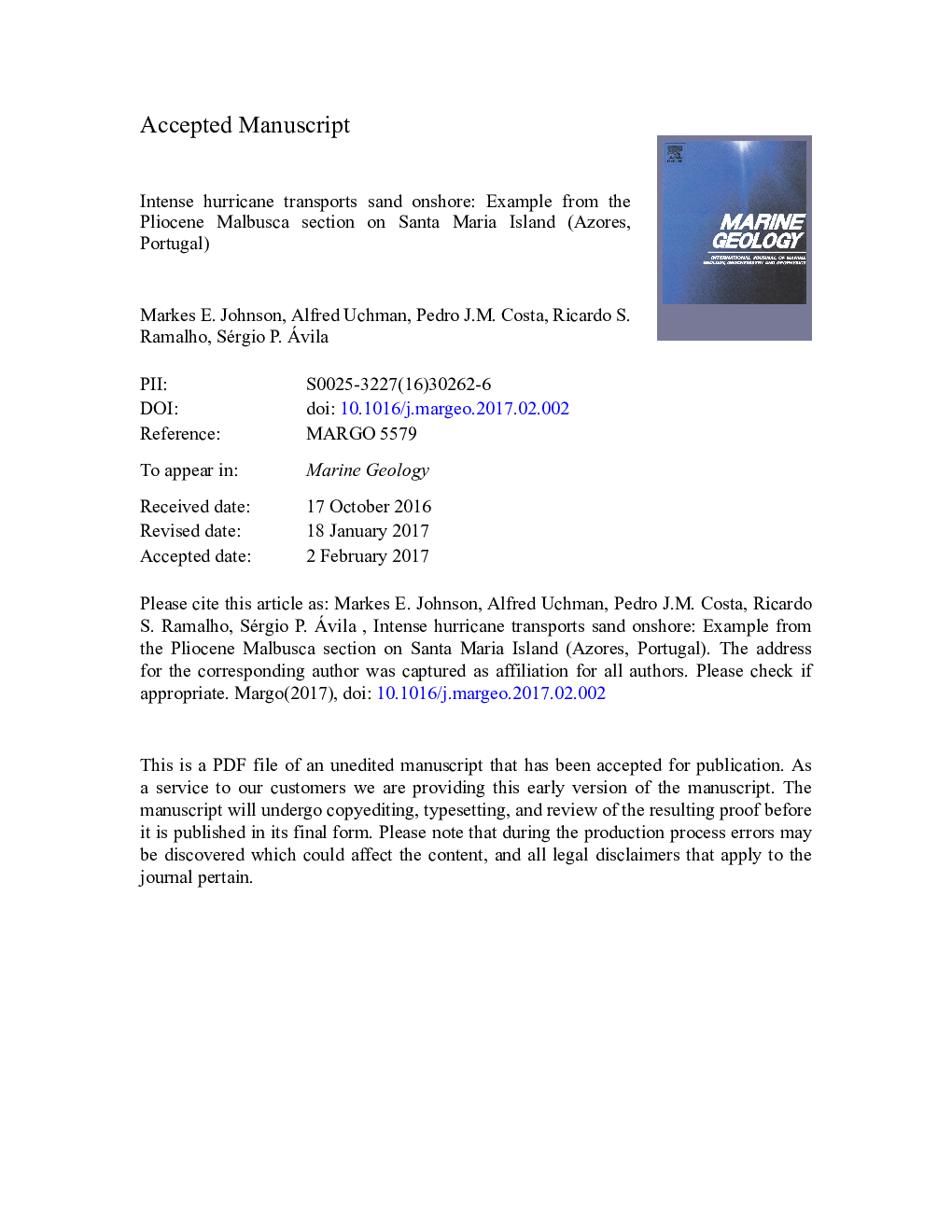| Article ID | Journal | Published Year | Pages | File Type |
|---|---|---|---|---|
| 5784407 | Marine Geology | 2017 | 21 Pages |
Abstract
Southern cliffs on Santa Maria Island in the Azores archipelago (North Atlantic Ocean) feature submarine volcanic sequences inter-bedded with Pliocene coralline algal limestone, shelly coquinas, and mixed volcaniclastic-calcarenite sandstone. Within the 20-m sedimentary succession at Malbusca, a singular, 5-m sandstone bed is distinguished by dark and light laminae dominated alternately by heavy minerals and carbonate detritus. Carbonate grain-size varies between that of coarse silt and very fine sand. The basal part shows coarser and more poorly sorted sand in an upward transition to increasingly finer carbonates. Accessible over a lateral space of 34Â m, the big bed is shouldered against and overlaps the remnants of a drowned rocky shore with a paleorelief of 4Â m that preserves intertidal to shallow subtidal biotas. Extrapolated from the big bed's rock face (1830Â m2) and the width of the eroded shelf on which it resides (8Â m), calculations yield a projected volume of 14,500Â m3. Unique to the island, the big bed is interpreted as a major hurricane deposit that moved sand from an offshore bar in an onshore path. Such an event fits the context of the Pliocene Warm Period, during which global El Niño conditions were more intense than today.
Keywords
Related Topics
Physical Sciences and Engineering
Earth and Planetary Sciences
Geochemistry and Petrology
Authors
Markes E. Johnson, Alfred Uchman, Pedro J.M. Costa, Ricardo S. Ramalho, Sérgio P. Ávila,
